4. The Post Assessment Tests (PATs)
The Post Assessment Tests were developed during ECCC Working Group 1 (WG1) work programme during the period 1992 to 1996, and were modified in 2014. The ECCC recommendations for the assessment of creep rupture data (CRDA) are based on a comprehensive review of CRDA procedures and an extensive evaluation of their effectiveness. The evaluation programme was performed by members of ECCC-WG1 using four large, inhomogeneous, multi-cast, multi-temperature working data sets, especially compiled for the exercise. The principal aim is to minimise the uncertainty associated with strength predictions by recommending pre-assessment, the implementation of post assessment acceptability criteria, the use of well documented CRDA procedures and the performance of duplicate assessments. Implementation of the ECCC recommendations require significant additional effort on completion of the first main assessment. However, this is regarded as entirely justified by the demonstrated reduction in the level of uncertainty associated with predicted strength values, in particular those involving extrapolation beyond the range of the available experimental data.
The CRDA post assessment acceptability criteria fall into three main categories, evaluating:
the physical realism of the predicted isothermal lines,
the effectiveness of the model prediction within the range of the input data and
the repeatability and stability of the extrapolations.
These are investigated in the following post assessment tests:
PAT-1 (Physical Realism of Predicted Isothermal Lines)
PAT-1.1
PAT-1.2
PAT-1.3
PAT-2 (Effectiveness of Model Prediction within Range of Input Data)
PAT-2.1
PAT-2.2
PAT-3 (Repeatability and Stability of Extrapolations)
PAT-3.1
PAT-3.2
The result of the individual Post Assessment Tests can be viewed using the button bar
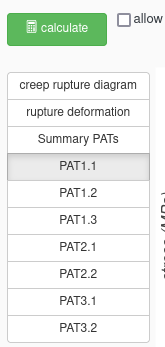
4.1. PAT-1
PAT 1.1 is a visual check of the credibility of the fit of the isothermals. You have to choose, if this visual check is ok or not with the pull-down menu “Select PAT 1.1”. You could also enter a comment in the editor field.

PAT 1.2 checks, if the predicted isothermal lines do not cross-over, come-together or turn-back
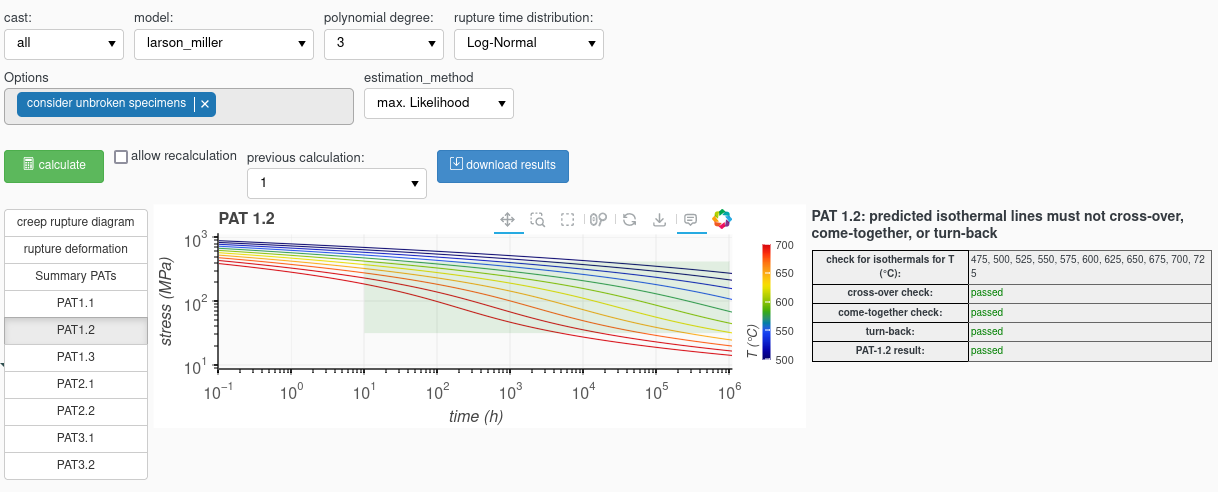
PAT 1.3 checks if the values of -∂log(tu*)/∂log σ0 is above 1.5. This is used to check whether the gradient of the isotherms does not drop too sharply.
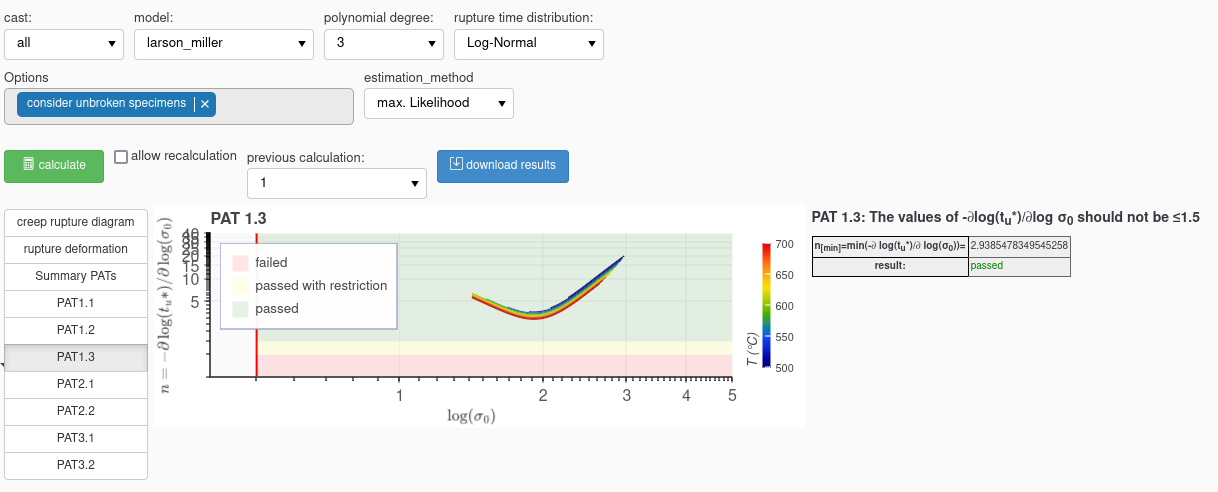
4.2. PAT-2
PAT 2.1 checks the effectiveness of the model to represent the behaviour of the complete dataset. It compares the calculated and measured values by statically describing the scatter and the position and slope of the mean value lines
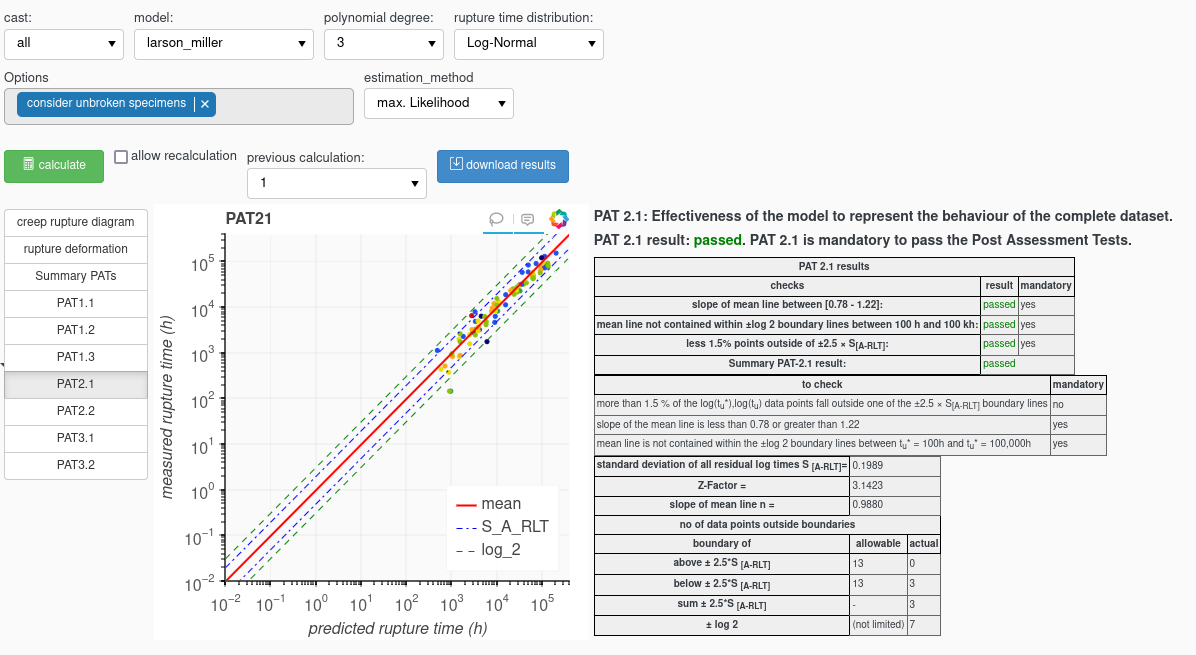
PAT 2.2 checks the effectiveness of the model to represent the behaviour individual casts. As for PAT 2.1 it compares the calculated and measured values by statically describing the scatter and the position and slope of the mean value lines, but for every “best tested cast”. You can select the results for every best tested cast using the pull-down menu “best teted cast”.
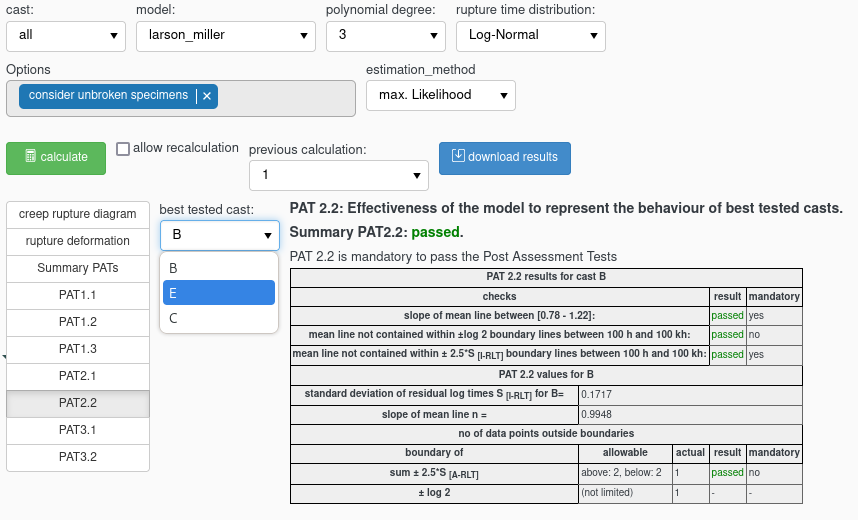
4.3. PAT-3
PAT 3.1 compares the isothermal lines at the main temperatures for the full dataset and a randomly culled dataset (cull 50% of data (failed and unfailed) between tu[max]/10 and ^tu[max]).

PAT 3.2 compares the isothermal lines at the main temperatures for the full dataset and a randomly culled dataset (Cull 10% of the data set by removing the lowest stress data points (failed and unfailed) from each of the main test temperatures (i.e. 10% from each)).
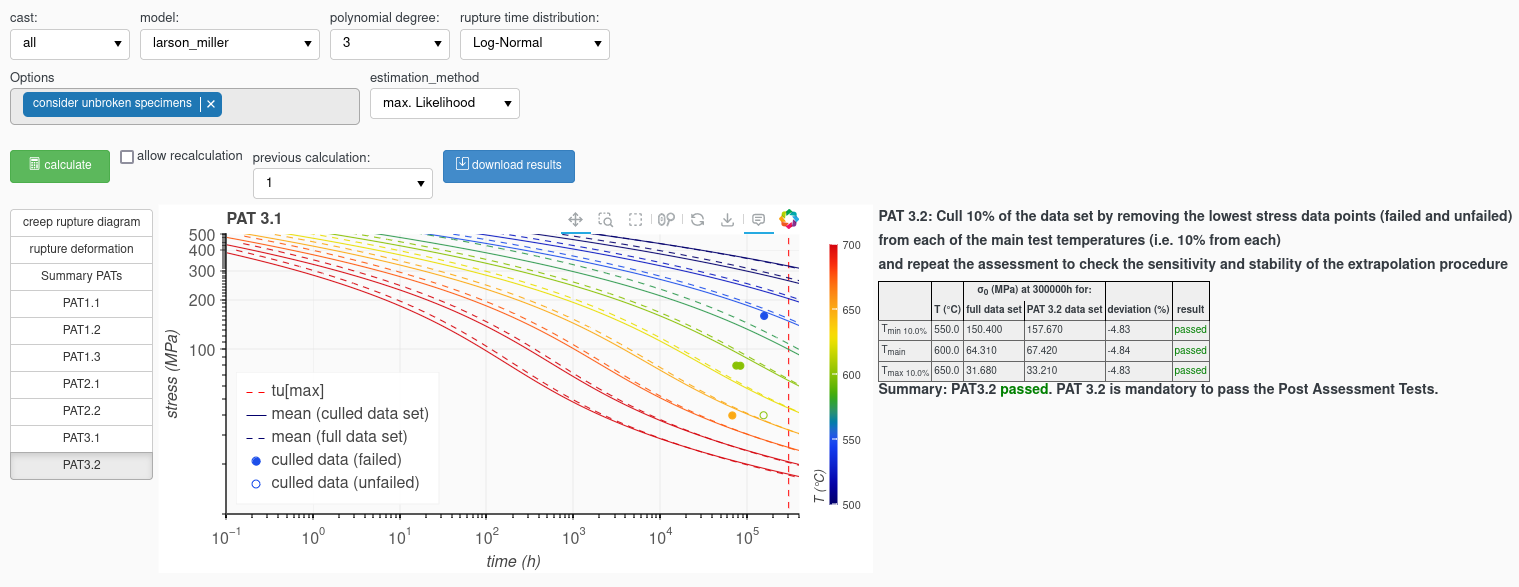
4.4. Summary table of all PATs
A summary of all Post Assessment Tests is show in the table “Summary PATs”
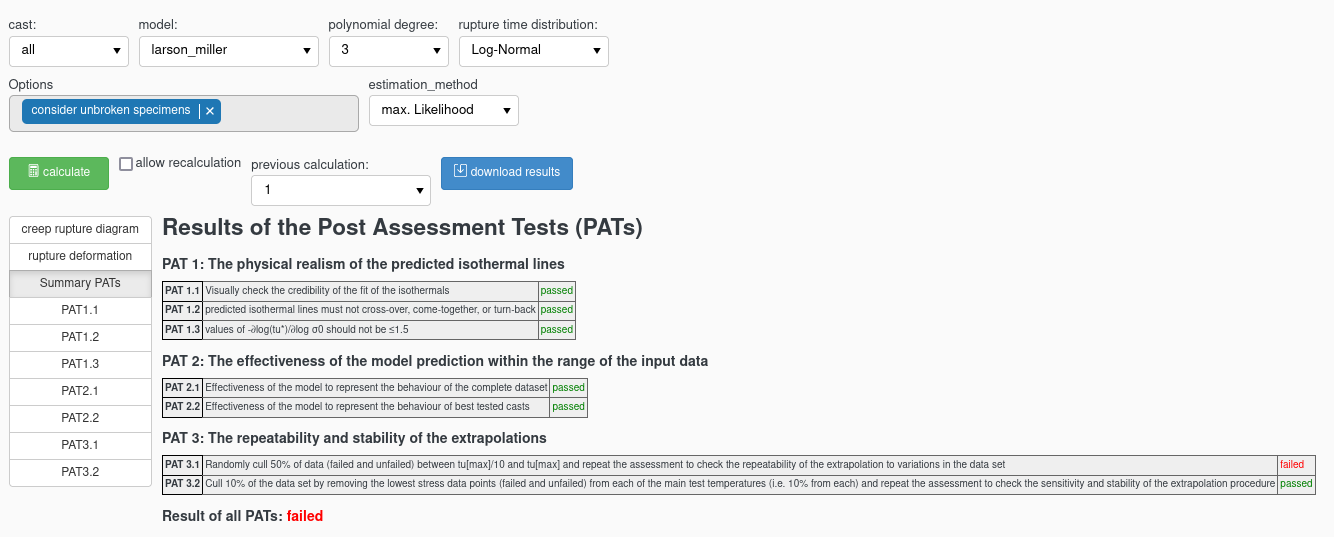
If a mandatory test is failed, the overall result is also “failed”. If only non-mandotory tests are failed, the overall result is “passed with restrictions”.
It should be emphasised that ECCC Post Assessment Tests do not evaluate whether an assessment is good or bad. They only show the assessor that the evaluation passes or fails defined criteria. An evaluation with a failing PAT may well be a satisfactory solution for the current application. However, this evaluation must be justified by the assessor. The Post Assessment Test is therefore an aid for the assessor to better compare different evaluation methods and evaluation results.
Note
The ECCC Post Assessment Tests are under active development.